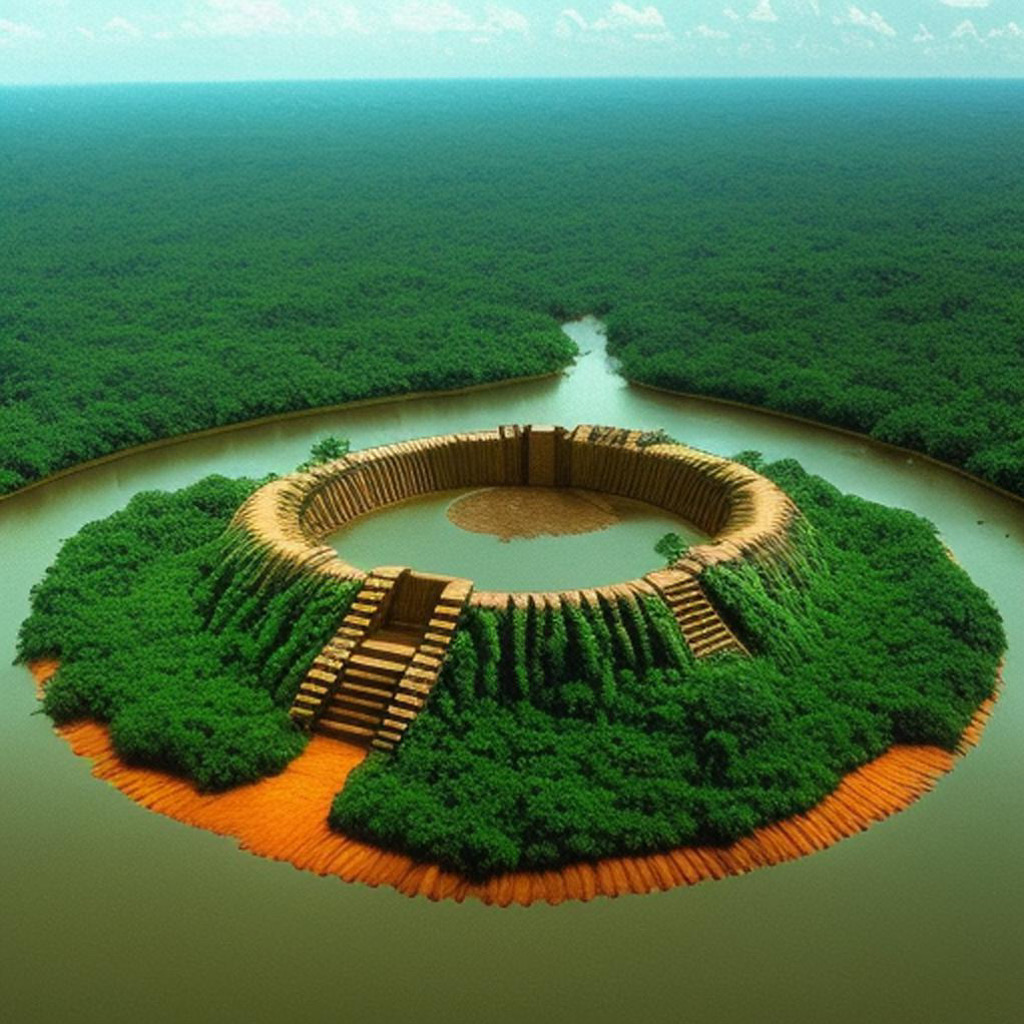
Table of Contents
Explorers and researchers who have searched the Amazon region for lost civilizations and ancient settlements
Francisco de Orellana, conquistador
Francisco de Orellana, a Spanish explorer who is known for his expedition down the Amazon River in the mid-16th century. His expedition down the Amazon River occurred in 1541-1542 and represents a significant historical event in the exploration of the Amazon region.
Francisco de Orellana was a Spanish conquistador who participated in various expeditions in South America. In 1541, he set out from Quito, Ecuador, on an expedition to find the mythical city of El Dorado, a fabled city of gold. During this journey, he and his men became the first Europeans to navigate the entire length of the Amazon River from its source in the Andes Mountains to the Atlantic Ocean.
Orellana’s expedition was fraught with hardships and conflicts with indigenous tribes along the river. They faced numerous challenges, including disease, hunger, and attacks from local peoples. Despite these difficulties, Orellana and his surviving men successfully completed their journey and returned to Spain with tales of their incredible voyage.
The connection between Michael Heckenberger’s research on ancient settlements in Mato Grosso and Francisco de Orellana’s expedition down the Amazon River lies in their shared focus on the Amazon rainforest. While Orellana’s expedition was primarily concerned with exploration and searching for riches, it did bring some attention to the vastness and complexity of the Amazon region.
Heckenberger’s research, on the other hand, is focused on understanding the ancient settlements and societies that once thrived in the Amazon. His work sheds light on the long history of human habitation and land management in the region, which challenges the traditional view of the Amazon as an untouched wilderness. While there may not be a direct connection between Orellana’s expedition and Heckenberger’s research, they are both pieces of the broader puzzle that contributes to our understanding of the Amazon rainforest’s history and significance.
Michael Heckenberger, anthropologist
Michael Heckenberger, an anthropologist, known for his work on the indigenous peoples and archaeology of the Amazon rainforest.
Michael Heckenberger is a prominent researcher who has studied the social organization and settlement patterns of indigenous societies in the Amazon basin, particularly in the Upper Xingu region of Brazil.
Heckenberger’s research has contributed significantly to our understanding of the complex societies that once thrived in the Amazon rainforest. His work challenges the long-held view that Amazonian societies were only small and nomadic. Instead, he has shown evidence of large, populous settlements with complex social structures, land management practices, and extensive networks of trade and interaction.
His research focused on the Upper Xingu region of the of Mato Grosso. In this region, he and his team studied the remains of ancient settlements known as “terra preta” (Portuguese for “dark earth”) sites.
The terra preta sites are characterized by dark, nutrient-rich soil that contrasts with the surrounding infertile Amazonian soils. These areas are believed to be the remnants of past human settlements, where indigenous peoples practiced extensive agricultural activities. The soil’s richness and fertility are a result of the long-term human occupation, where ancient inhabitants used a combination of charcoal, pottery fragments, manure, and other organic waste to enrich the soil over centuries or even millennia.
Heckenberger’s research showed that the terra preta sites were not just small and temporary villages but rather large and well-planned settlements with complex societies. Some of these settlements had extensive road networks, canals, and moats, indicating significant engineering and planning efforts. The findings challenged the traditional view of the Amazon rainforest as a pristine, untouched wilderness and revealed that it was home to densely populated, sophisticated societies.
Moreover, the research shed light on the sophisticated social organization and cultural practices of the ancient inhabitants. It demonstrated that these societies engaged in long-distance trade networks, which brought valuable goods from distant regions. The study also highlighted the sustainability of their agricultural practices, showing that they managed and utilized the land in a way that supported larger populations and prevented environmental degradation.
It’s important to note that scientific research is ongoing, and new discoveries may have been made since my last update. To get the most up-to-date information on Michael Heckenberger’s work and the settlements in Mato Grosso, I recommend referring to scholarly articles and publications from reputable sources.
An anthropologist is a scientist who studies human societies, cultures, and their development.
Alceu Ranzi, geologist and paleontologist
Alceu Ranzi was a Brazilian geologist and paleontologist known for his research on the Amazon region’s geology and paleontology. He dedicated much of his career to studying the geological history and fossil record of the Amazon basin.
Ranzi’s research contributed to our understanding of the ancient environments and ecosystems that existed in the Amazon region millions of years ago. His work involved the discovery and analysis of fossil remains, which provided valuable insights into the past climate, flora, and fauna of the area.
Note that Michael Heckenberger’s discoveries on the lost cities of the Amazon and Alceu Ranzi’s paleontological research are ongoing, as they are part of broader scientific endeavors and are subject to continuous exploration and study. To get the most up-to-date information about Alceu Ranzi and his contributions, look for recent publications and academic sources related to his work in paleontology and geology.
Other explorers and researchers who searched the Amazon region for lost civilisations
There have been other explorers and researchers who have searched the Amazon region for lost civilizations and ancient settlements. The allure of the Amazon rainforest and its potential hidden treasures has fascinated adventurers and scholars for centuries. Some notable figures and expeditions include:
Percy Fawcett, explorer
Percy Fawcett was a British explorer who conducted multiple expeditions to the Amazon in the early 20th century. He believed in the existence of an ancient, advanced civilization he called “Z,” which he thought might be hidden in the Amazon rainforest. Fawcett disappeared during his final expedition in 1925, leading to one of the greatest exploration mysteries of the 20th century.
Colonel P. H. Fawcett (not related to Percy Fawcett), explorer
Another British explorer, Colonel P. H. Fawcett, also ventured into the Amazon rainforest in the late 1800s and early 1900s. He searched for ancient civilizations and documented indigenous peoples and their cultures.
Theodor Koch-Grünberg, ethnologist and explorer
A German ethnologist and explorer, Theodor Koch-Grünberg, conducted extensive research and exploration in the Amazon region during the late 19th and early 20th centuries. He studied the customs, languages, and cultures of indigenous tribes and documented archaeological remains.
William Duncan Strong, anthropologist
An American anthropologist, William Duncan Strong, conducted research in the Amazon in the 1920s and 1930s. His work focused on the archaeology and prehistory of the region, searching for evidence of ancient civilizations.
George Stuart, archaeologist
An American archaeologist, George Stuart, conducted archaeological research in the Amazon region during the latter half of the 20th century. His work focused on ancient ceramics and artifacts, shedding light on past human settlements.
National Geographic Expeditions
Various expeditions sponsored by National Geographic and other institutions have also conducted research in the Amazon rainforest to study its archaeology and ancient cultures.
It’s essential to approach claims of lost civilizations with a critical eye, as some of the tales and legends might be based more on mythology and speculation than solid evidence. Nonetheless, these explorers and researchers have contributed to our understanding of the Amazon’s rich history and the presence of ancient societies in the region. Their work has unveiled a fascinating tapestry of human life and culture that has been intertwined with the Amazon rainforest for millennia.
Creating a comprehensive timetable of all the findings along the Amazon River is an extensive task, as numerous researchers, explorers, and scientists have made discoveries spanning centuries. Additionally, new findings continue to emerge through ongoing research and exploration.
A simplified summary of some notable findings and the corresponding researchers or expeditions
| Name/Expedition | Discovery/Finding | Time Period |
| Francisco de Orellana | First European to navigate the entire Amazon River | 1541-1542 |
| Theodor Koch-Grünberg | Documentation of indigenous tribes and cultures | Late 1800s – Early 1900s |
| Percy Fawcett | Search for the mythical lost city “Z” (disappeared) | Early 20th century |
| Colonel P. H. Fawcett | Documentation of indigenous tribes and cultures | Late 1800s – Early 1900s |
| William Duncan Strong | Research on Amazonian archaeology and prehistory | 1920s – 1930s |
| Michael Heckenberger | Discovery of ancient settlements and lost cities of the Amazon | Modern research (ongoing) |
| Alceu Ranzi | Paleontological research and study of ancient environments | Modern research (ongoing) |
| National Geographic Expeditions | Various archaeological and cultural studies | Ongoing expeditions |
This is not an exhaustive list, and many other researchers and expeditions have contributed to our understanding of the Amazon River and its surrounding areas. Additionally, the time periods mentioned are approximate and may vary based on specific expeditions or the duration of ongoing research projects. For a more detailed and up-to-date overview of the findings along the Amazon River, refer to scholarly publications, academic sources, and reputable research institutions involved in Amazonian studies and exploration.
Shop tips
Francisco de Orellana, conquistador On Amazon
Michael Heckenberger On Amazon
Alceu Ranzi On Amazon
Theodor Koch-Grünberg On Amazon
Percy Fawcett On Amazon
Colonel P. H. Fawcett On Amazon
William Duncan Strong On Amazon
National Geographic Expeditions on Amazon
Thank you for reading, shares and comments!
✨ Comment Policy ✨
We welcome thoughtful, kind, and constructive comments that contribute to meaningful conversations.
Please note:
- Promotional links and unsolicited offers will be removed.
- Spam, irrelevant content, or self-promotion without prior permission will not be published.
- We value quality engagement over quantity — thank you for helping us keep this a respectful and inspiring space!
Sources openai Language models, aitrot, picsart and mib
Embark on a journey into the realm of affiliate marketing and craft your own website within a vibrant, supportive community. Join me in this adventure, where you can begin as a free starter and stay as long as you desire. Enjoy complimentary hosting and foundational teachings to set you on your path. For those with advanced skills, opportunities to elevate your expertise await. Take a moment to explore and witness the magic for yourself!




